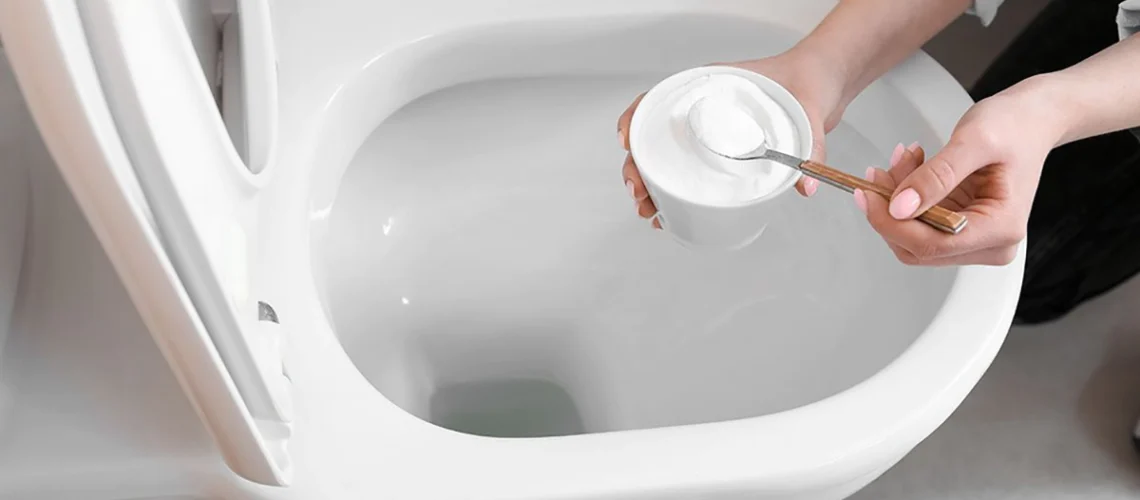A clogged toilet is one of those household problems that can cause panic, especially when you don’t have a plunger on hand. But don’t worry—there are several effective methods you can use to unclog your toilet without a plunger. These techniques utilize common household items and are easy to follow, helping you avoid a messy situation without the need for special tools.
Contents
Method 1: Hot Water and Dish Soap
Step 1: Add Dish Soap
Start by adding about a half cup of liquid dish soap to the toilet bowl. The soap will help lubricate the clogged material, making it easier for it to slide down the pipes.
Step 2: Pour Hot Water
Next, carefully pour a bucket of hot (but not boiling) water into the toilet bowl. The heat from the water can help break down the clog, while the weight of the water adds pressure to push it through the pipes. Pour the water from waist height to increase the force.
Step 3: Wait and Flush
Allow the hot water and dish soap mixture to sit for a few minutes. Afterward, try flushing the toilet. If the water goes down smoothly, the clog has been cleared. If not, repeat the process.
Method 2: Baking Soda and Vinegar
Step 1: Add Baking Soda
Pour about one cup of baking soda into the toilet bowl. Baking soda is a natural cleaner and deodorizer that can help loosen the clog.
Step 2: Add Vinegar
Next, slowly pour one to two cups of white vinegar into the toilet. The combination of baking soda and vinegar will create a fizzing reaction that can help break apart the clog.
Step 3: Let It Sit
Let the mixture sit in the toilet for about 10-15 minutes. This allows the chemical reaction to work on the clog.
Step 4: Flush with Hot Water
After the mixture has had time to work, pour hot water into the toilet and try flushing. If the clog persists, you can repeat the process.
Method 3: The Wire Hanger Technique
Step 1: Unwind the Hanger
Take a wire coat hanger and unwind it until you have a long, straight piece of wire. If possible, leave a small hook on one end.
Step 2: Insert the Hanger into the Drain
Carefully insert the wire hanger into the toilet drain. Use the hooked end to try and break up or fish out the clog. Be gentle to avoid scratching the porcelain.
Step 3: Push or Pull the Clog
Once you’ve reached the clog, use the hanger to push or pull it through the drain. Once you feel the clog has loosened, remove the hanger and try flushing the toilet.
Method 4: Using a Toilet Brush
Step 1: Place the Brush in the Drain
If you’re in a bind and don’t have a plunger, a toilet brush can be a temporary substitute. Place the brush into the toilet drain as far as it will go.
Step 2: Push and Twist
Push the brush up and down and twist it to help break up the clog. The bristles can sometimes dislodge whatever is causing the blockage.
Step 3: Flush the Toilet
After attempting to break up the clog with the toilet brush, try flushing the toilet. If the clog has cleared, the water will go down smoothly.
Method 5: Using Epsom Salt or a Similar Product
Step 1: Add Epsom Salt
Pour a generous amount of Epsom salt into the toilet bowl. If you don’t have Epsom salt, you can use a bath bomb as an alternative. The salt or bath bomb will fizz and help break up the clog.
Step 2: Wait and Flush
Let the Epsom salt or bath bomb sit for a few minutes to work on the clog. Then, flush the toilet. The added lubrication and fizz should help clear the blockage.
A clogged toilet can be a stressful situation, but as you can see, there are several effective ways to unclog it without a plunger. Whether you use hot water and dish soap, baking soda and vinegar, or even a wire hanger, these methods can help you solve the problem quickly and easily. Keep these tips in mind for the next time you’re caught without a plunger, and you’ll be able to tackle the issue with confidence.
FAQs
If these methods fail to unclog your toilet, it may be time to call a professional plumber. Persistent clogs could indicate a more serious problem, such as a blockage deep in the sewer line.
It’s best to avoid using boiling water as it can crack the porcelain of your toilet. Hot water that is not boiling is effective and safer for this purpose.
While chemical drain cleaners can be effective, they can also damage your pipes over time and pose safety risks. It’s better to try natural methods first or use a drain cleaner as a last resort.
To prevent clogs, avoid flushing anything other than human waste and toilet paper. Regular maintenance, such as using baking soda and vinegar, can also help keep your drains clear.
Yes, many of these methods, such as the baking soda and vinegar combination, are effective for unclogging sinks and showers as well. However, be cautious with the wire hanger method to avoid damaging smaller pipes.



